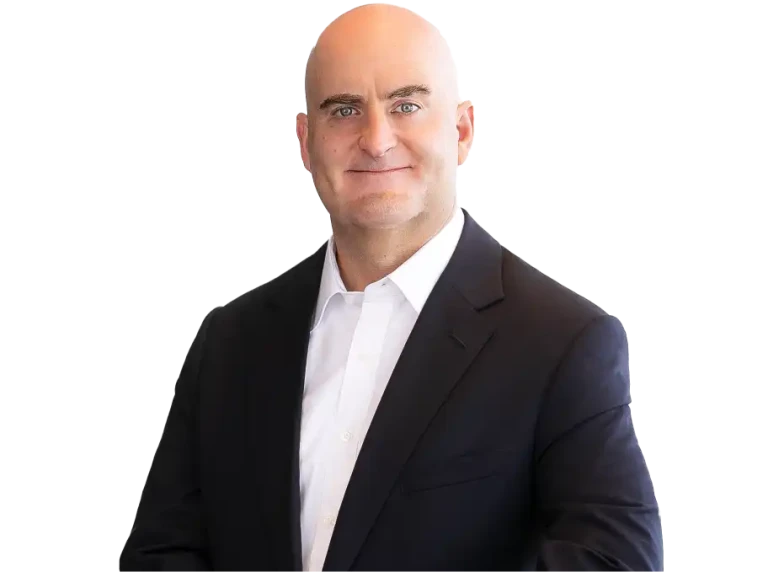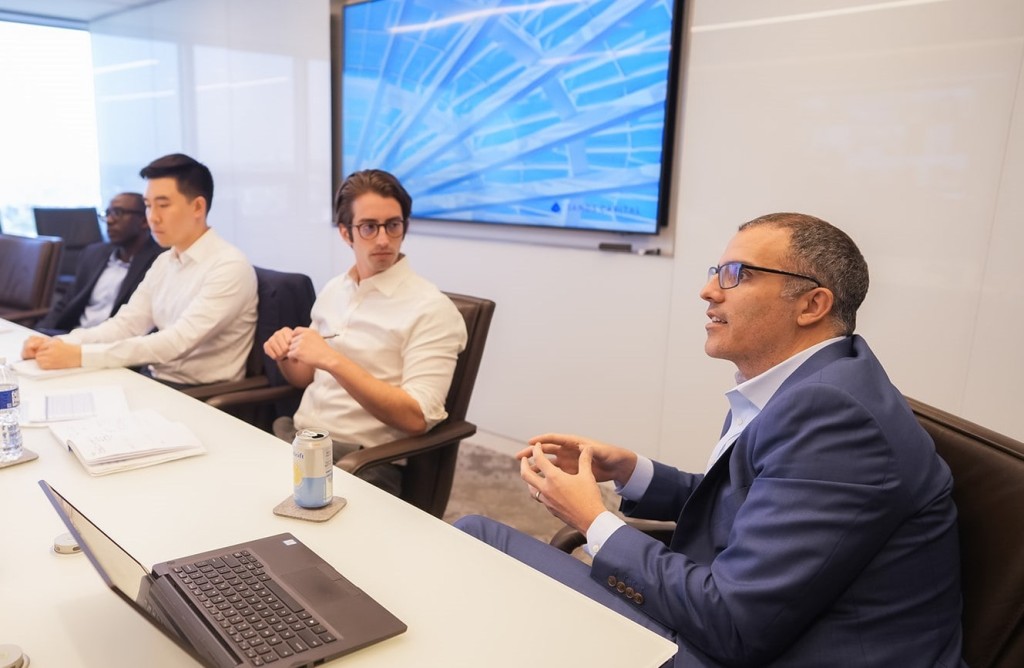Related Articles
Change can create uncertainty in financial markets, but it also has the potential to unlock countless opportunities for many of the companies we own and for those businesses that are still emerging.
Transcript
Does Active Management Still Work?
People ask us, especially after the last few years, can active management continue to add value? We believe unequivocally yes. And we believe if you own the best growth companies, and they can grow faster than the average company for many, many years in a row, that will always be a great way to add value. Now, just because you find a portfolio of great growth companies that grow faster than the market for many, many years in a row, that does not mean every year that portfolio will beat the market.
Sometimes, our approach to investing is out of favor, particularly in environments like the one we’ve been in for the last couple of years, when—because of the pandemic, because of what’s going on with interest rates, because of what’s going on with geopolitical tensions, because of what’s going on with tectonic changes in technology, with things like AI [artificial intelligence] and maybe new kinds of energy—this has created a lot of distortion and doubt, which is making people question whether active management still can add value over time.
However, we believe—and our numbers support—that what we do adds value over time but not all the time. Often, these long sweeps of wealth creation are punctuated by volatility and poor performance.
Managing Through Change
During such a period of distortion and doubt, it became really, really hard—generationally difficult—to manage a business, whether that was a restaurant, a law firm, a dog food factory, or Amazon.com.
It just became really, really hard to know what’s demand for my product or service going to be? How do I put in place enough people or inventory or factory capacity to meet that demand?
And everything was all over the place. As you can remember, we went from this time during COVID-19 when I couldn’t buy any toilet paper to as soon as it showed up at the supermarket, I bought a closetful. And then it was back on the supermarket shelf again, and I whittled down all the toilet paper I had in my closet. I didn’t need to go back to the supermarket to buy it.
The Bullwhip: How These Challenges Have Affected Many Growth Businesses
And this was happening with semiconductors for your automobile. If you crashed your car, you were waiting six months to get one little $5 semiconductor before they could fix the car. We call this phenomenon of what happened the bullwhip effect. And we continue to work through that today in different industries at different times throughout the global economy.
And so one way to think about that is: As we started COVID-19, revenues went up a lot faster than people thought for work-from-home companies, for digital companies—for a lot of businesses. And as that was happening, companies were furiously trying to hire people, build inventories to meet that demand, put capacity, warehouses, and factory capacity in place to meet that demand.

But that took time. So, there was a lag effect. Margins and free cash flows went up significantly while revenues were growing much faster than your expenses. But then what happened was revenues started to crest and come back down to normal. And at the same time, all of that expense and capital expenditure were rising. This turned those margins and free cash flows and unit economics upside down.
Instead of, “Wow, these are the greatest companies ever,” or “The valuations aren’t high enough,” we had “These are all fake companies,” or “These are all companies that aren’t going to be here next year.” And, of course, pessimism reigned, and multiples were compressed significantly.
Now, as we started to get back to normal, what has happened is we’re getting back to a normal rate of secular revenue growth. We’re getting back to a normal rate of expense growth to support that capital expenditure, to support that margins and free cash flows are coming back to something normal.
And what’s really happened under the surface that I think is going to be profound as we go through time is the competitive intensity of so many of these industries has gone way down. This is true for our competitors that existed in part because they had lots of free capital or they had access to very low-cost capital they could compete on to give their product and service away, try to capture market share, and figure out the profits later.
All that is over, and what we are left with is dominant leading companies growing at above-average growth rates in industries where the competitive pressure has permanently gone down. We believe that over time—in some industries, this is already happening—but, over time, many of the industries in which our companies compete will benefit from this phenomenon as well.
Identifying the Beneficiaries of Change
We want to identify companies that are either creating change or benefiting from those changes in a disproportionate way. And in the world of AI, for example, we can own companies that are critical infrastructure providers—certain companies making semiconductors and the giant cloud companies we think will be beneficiaries and enablers of this.
And then companies that we invest in that don’t have anything to do with technology that are users of the latest technology of the day. Those companies benefit in a disproportionate way from a compounding of: We have the most money, we have the most talented people, we buy the most AI stuff, whatever that is—it remains to be seen perhaps—and then we apply that to our regular old business of selling sneakers or selling cement. And we can build a compounding advantage by applying that better than everyone else for a long period of time in a specific way for our business.
If we think back to the 1970s, for example, Wal-Mart did this with using computer technology, so they were able to digitally manage their large and sprawling amount of inventory all over the country to buy it more effectively, to store it more effectively, to put it on the shelf more effectively, and to do it at scale.
And that allowed Wal-Mart to become the biggest retailer in American history. These same effects are happening today, but with the modern tools of today relative to electronic data interchange—or EDI—that Wal-Mart used back then.
Disclosures:
The views expressed are the opinion of Sands Capital and are not intended as a forecast, a guarantee of future results, investment recommendations, or an offer to buy or sell any securities. The views expressed were current as of the date indicated and are subject to change. This material may contain forward-looking statements, which are subject to uncertainty and contingencies outside of Sands Capital’s control. Readers should not place undue reliance upon these forward-looking statements. There is no guarantee that Sands Capital will meet its stated goals. Past performance is not indicative of future results. A company’s fundamentals or earnings growth is no guarantee that its share price will increase. Forward earnings projections are not predictors of stock price or investment performance, and do not represent past performance. References to companies provided for illustrative purposes only. The portfolio companies identified do not represent all the securities purchased or recommended for advisory clients. There is no assurance that any securities discussed will remain in the portfolio or that securities sold have not been repurchased. You should not assume that any investment is or will be profitable. GIPS Reports found here.
As of December 20, 2023, Amazon (the parent of Amazon.com) was held in the Select Growth, Global Growth, Technology Innovators, and Global Shariah strategies. Walmart was not held in any Sands Capital strategies. The securities were referenced for illustrative purposes only.
This material is for informational purposes only and does not constitute an offer, invitation, or recommendation to buy, sell, subscribe for, or issue any securities. The material is based on information that we consider correct, and any estimates, opinions, conclusions, or recommendations contained in this communication are reasonably held or made at the time of compilation. However, no warranty is made as to the accuracy or reliability of any estimates, opinions, conclusions, or recommendations. It should not be construed as investment, legal, or tax advice and may not be reproduced or distributed to any person.
In the United Kingdom, this communication is issued by Sands Capital Advisors – UK Ltd (“Sands UK”) and approved by Robert Quinn Advisory LLP, which is authorised and regulated by the UK Financial Conduct Authority (“FCA”). Sands UK is an Appointed Representative of Robert Quinn Advisory LLP. This material constitutes a financial promotion for the purposes of the Financial Services and Markets Act 2000 (the “Act”) and the handbook of rules and guidance issued from time to time by the FCA (the “FCA Rules”). This material is for information purposes only and does not constitute an offer to subscribe for or purchase of any financial instrument. Sands UK neither provides investment advice to, nor receives and transmits orders from, persons to whom this material is communicated, nor does it carry on any other activities with or for such persons that constitute “MiFID or equivalent third country business” for the purposes of the FCA Rules. All information provided is not warranted as to completeness or accuracy and is subject to change without notice. This communication and any investment or service to which this material may relate is exclusively intended for persons who are Professional Clients or Eligible Counterparties for the purposes of the FCA Rules and other persons should not act or rely on it. This communication is not intended for use by any person or entity in any jurisdiction or country where such distribution or use would be contrary to local law or regulation.













